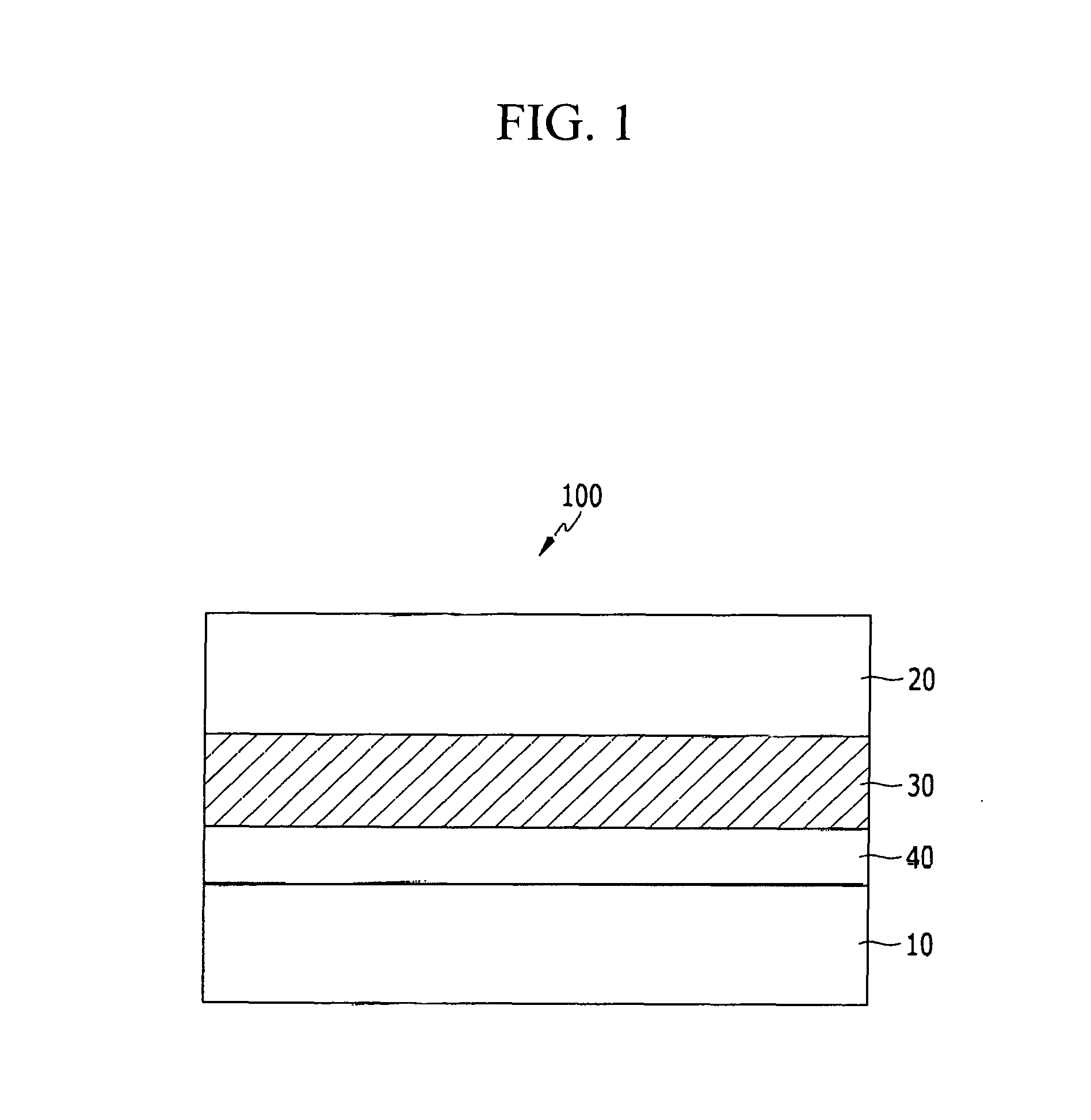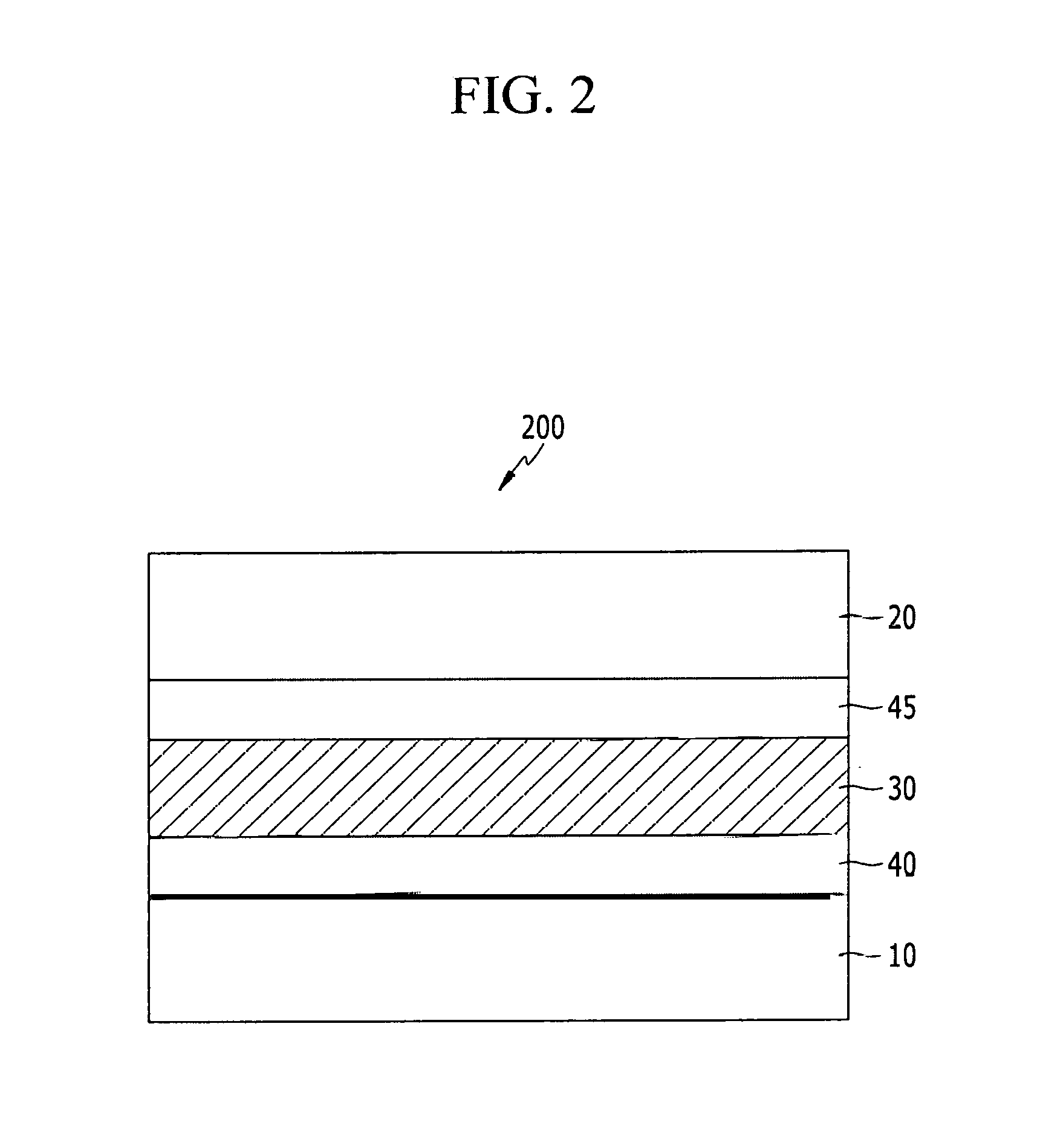Optoelectronic device, and image sensor and electronic device including the same
an optoelectronic device and image sensor technology, applied in the direction of radiation controlled devices, sustainable manufacturing/processing, final product manufacturing, etc., can solve the problems of deteriorating the sensitivity the accuracy of the external quantum efficiency, and the low external quantum efficiency of the organic optoelectronic device in the visible light region, so as to improve the sensitivity and performance, the effect of reducing the dark curren
- Summary
- Abstract
- Description
- Claims
- Application Information
AI Technical Summary
Benefits of technology
Problems solved by technology
Method used
Image
Examples
example 1
[0110]A 150 nm-thick first electrode is formed on a glass substrate by sputtering ITO. Subsequently, a 10 nm-thick first buffer layer including MoOx (x=2.62) is formed by thermally depositing molybdenum oxide on the first electrode and plasma-treating it under an oxygen atmosphere for 5 minutes. The x is verified through an AES (Auger electron spectroscopy) analysis. Herein, power is 100 W, and a gas flow rate is set to be 100 sccm. On the first buffer layer, an 80 nm-thick photoelectric conversion layer is formed by codepositing SubPC (a p-type semiconductor) and C60 (an n-type semiconductor) in a volume ratio of 1:1. Subsequently, on the photoelectric conversion layer, a 7 nm-thick second electrode is formed by thermally depositing ITO, manufacturing an optoelectronic device.
example 2
[0111]A 150 nm-thick first electrode is formed on a glass substrate by sputtering ITO. Subsequently, a 10 nm-thick first buffer layer including MoOx (x=2.78) is formed by thermally depositing molybdenum oxide on the first electrode and plasma-treating it under an oxygen atmosphere for 60 minutes. The x is verified through an AES (Auger electron spectroscopy) analysis. Herein, power is 100 W, and a gas flow idle is set to be 100 sccm. On the first buffer layer, an 80 nm-thick photoelectric conversion layer is formed by codepositing SubPC (a p-type semiconductor) and C60 (an n-type semiconductor) in a volume ratio of 1:1. Subsequently, a 7 nm-thick second electrode is formed by thermally depositing ITO on the photoelectric conversion layer, manufacturing an optoelectronic device.
[0112]Current densities of the optoelectronic devices according to Comparative Examples 1 and 2 and Examples 1 and 2 depending on a voltage are respectively measured, and the results are provided in FIG. 8. FI...
PUM
 Login to View More
Login to View More Abstract
Description
Claims
Application Information
 Login to View More
Login to View More - R&D
- Intellectual Property
- Life Sciences
- Materials
- Tech Scout
- Unparalleled Data Quality
- Higher Quality Content
- 60% Fewer Hallucinations
Browse by: Latest US Patents, China's latest patents, Technical Efficacy Thesaurus, Application Domain, Technology Topic, Popular Technical Reports.
© 2025 PatSnap. All rights reserved.Legal|Privacy policy|Modern Slavery Act Transparency Statement|Sitemap|About US| Contact US: help@patsnap.com



